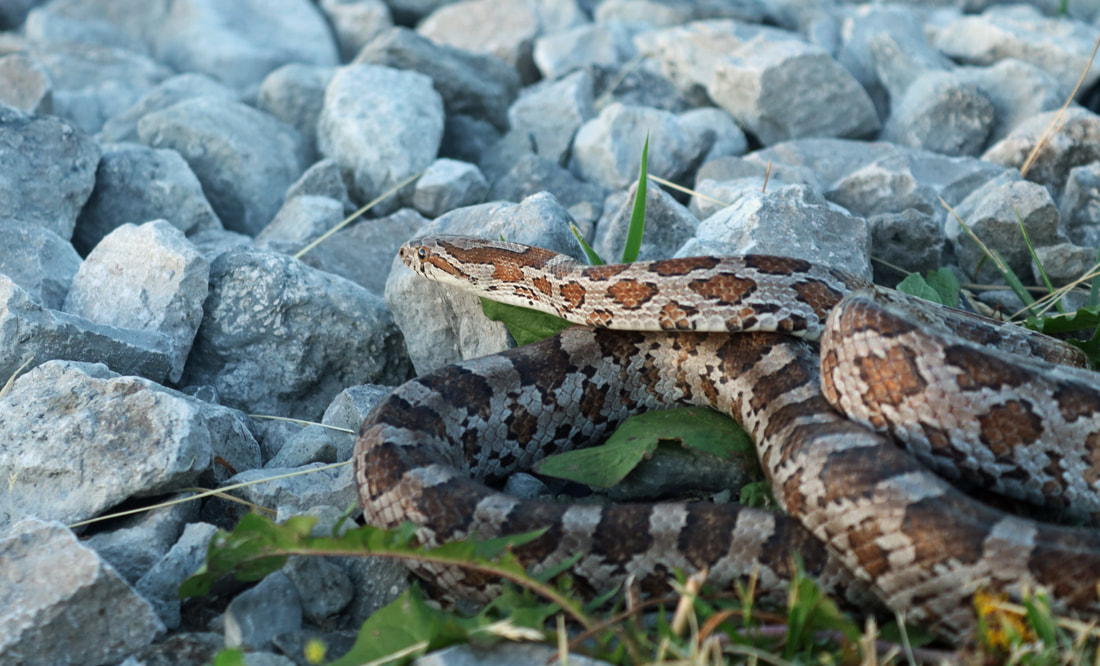GREAT PLAINS RAT SNAKE
Pantherophis emory
Constrictor- Nonvenomous
The Great Plains rat snake is light gray or tan in color, with dark gray, brown, or green-gray blotching down its back, and stripes on either side of the head which meet to form a point between the eyes.
They can grow from 3 feet to 5 feet long.
They are found mainly in wooded areas in the southern half of the state and along Missouri River counties, excluding southeastern counties.
They live in areas with a relatively high rodent population, which is their primary diet. They will also eat birds, and occasionally snakes, lizards, and frogs, all of which they subdue by constriction. Like most rat snakes, when agitated, the Great Plains rat snake will shake its tail vigorously, which by itself makes no noise, but when it shakes amongst dry leaf litter.
They can often be found on farmland, which often leads it to be erroneously called the chicken snake.
The Great Plains rat snake is light gray or tan in color, with dark gray, brown, or green-gray blotching down its back, and stripes on either side of the head which meet to form a point between the eyes.
They can grow from 3 feet to 5 feet long.
They are found mainly in wooded areas in the southern half of the state and along Missouri River counties, excluding southeastern counties.
They live in areas with a relatively high rodent population, which is their primary diet. They will also eat birds, and occasionally snakes, lizards, and frogs, all of which they subdue by constriction. Like most rat snakes, when agitated, the Great Plains rat snake will shake its tail vigorously, which by itself makes no noise, but when it shakes amongst dry leaf litter.
They can often be found on farmland, which often leads it to be erroneously called the chicken snake.
Photo by Peter Paplanus



